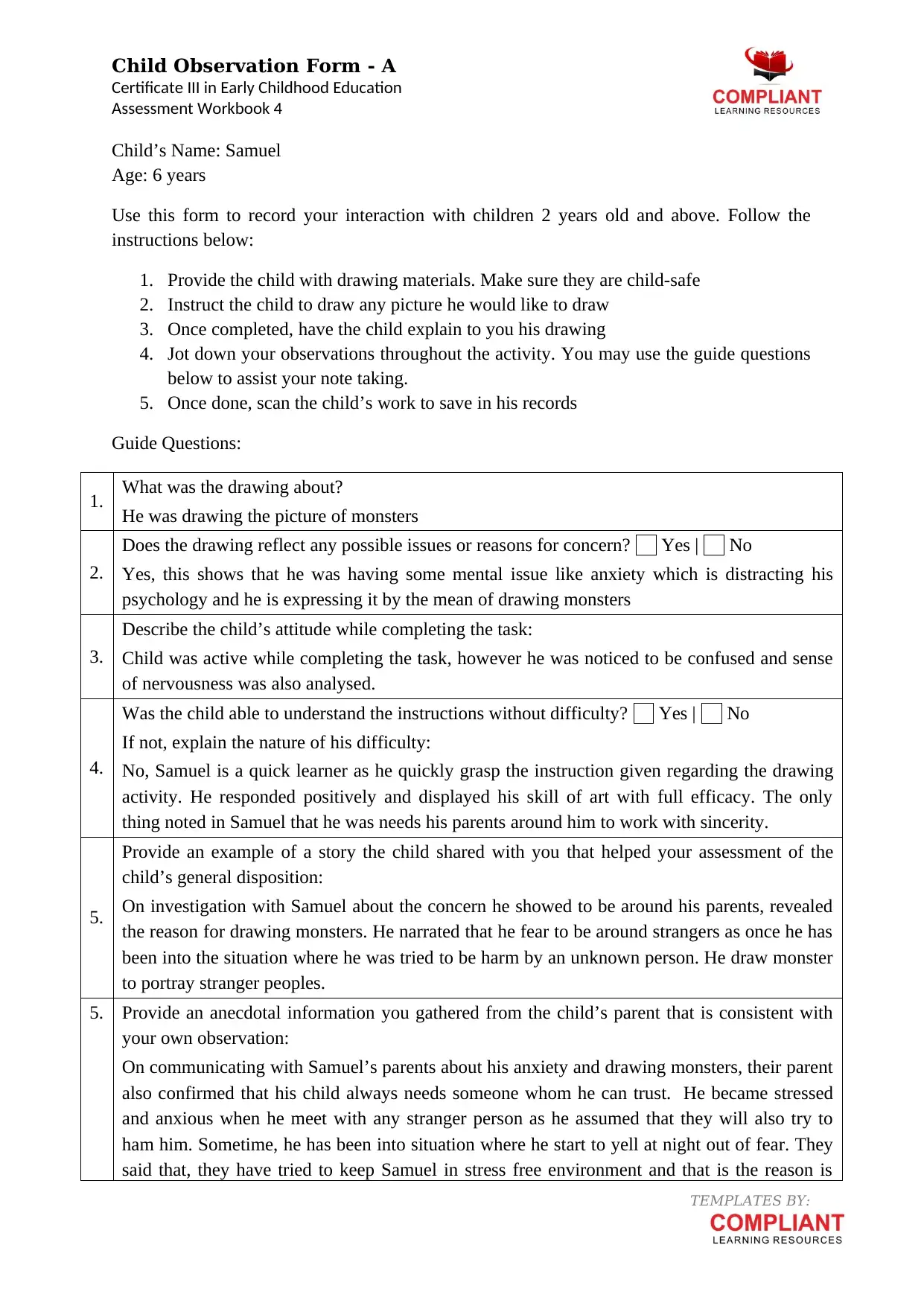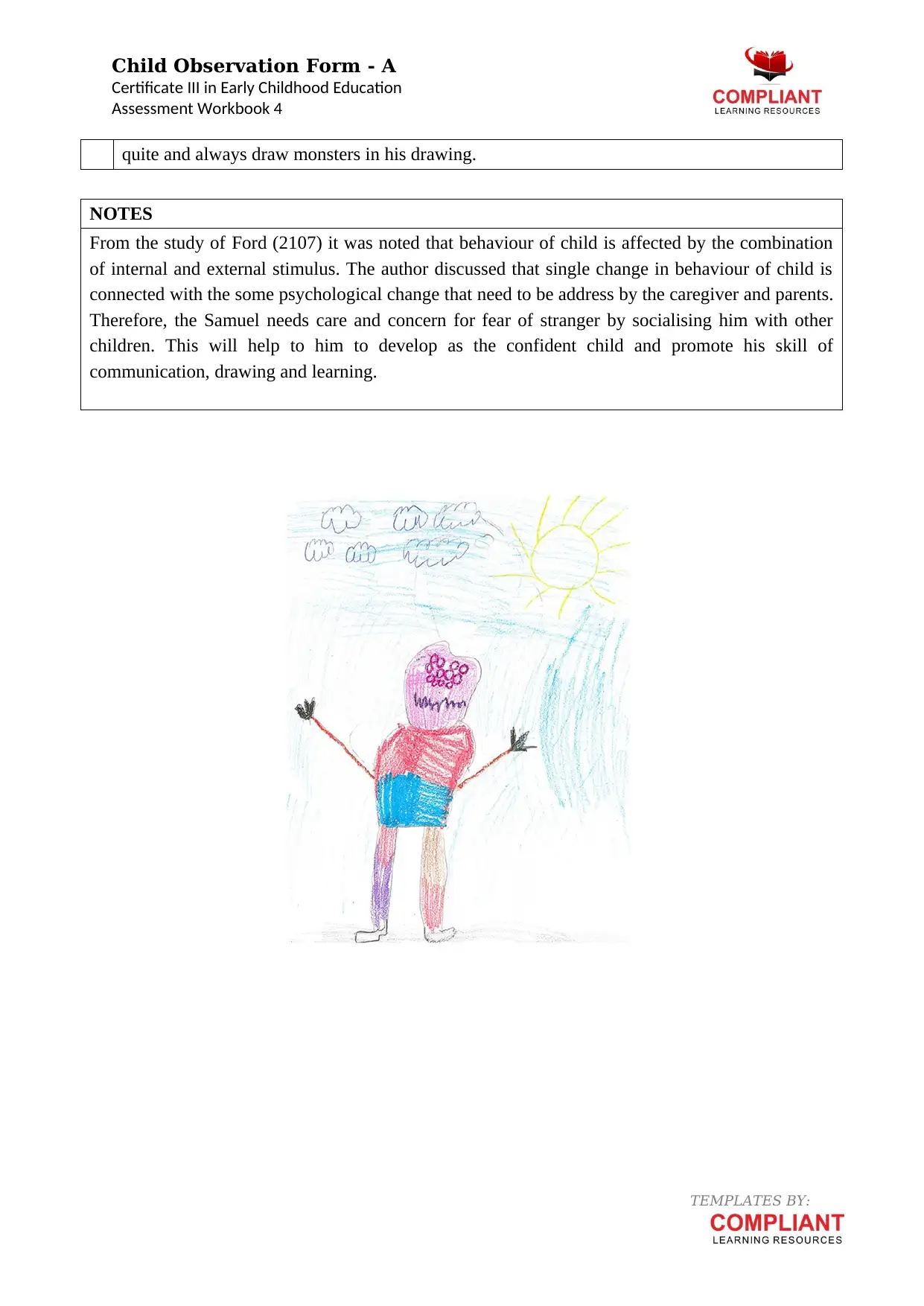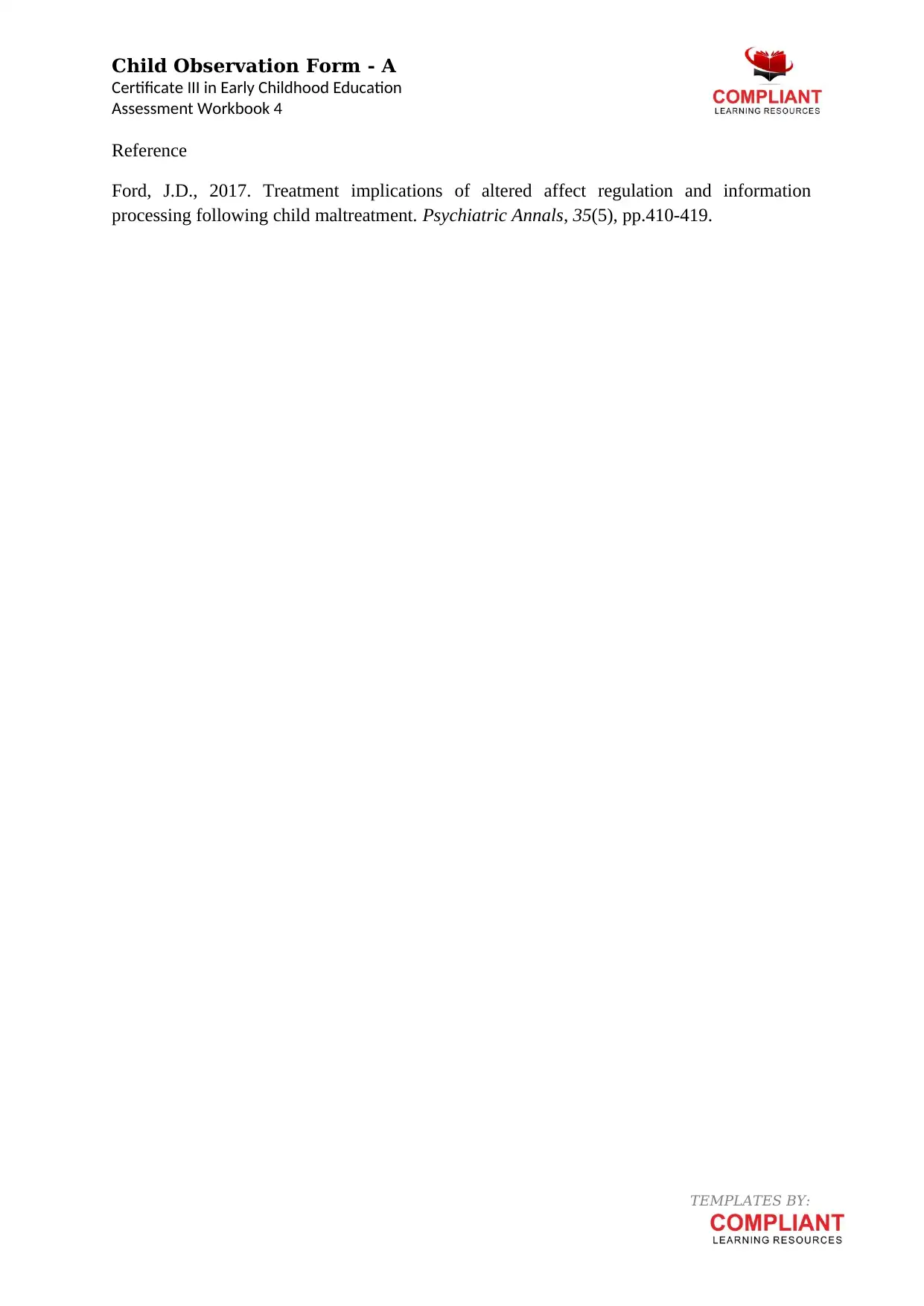Child Observation Form - Assessment Workbook, Samuel, 6 years old
VerifiedAdded on 2022/09/18
|3
|626
|15
Practical Assignment
AI Summary
This assignment is a child observation form designed for assessing children aged 2 years and above, focusing on their drawing and behavior. The student was instructed to provide drawing materials, have the child draw a picture, and then document their observations during the activity. The form includes guide questions to analyze the drawing's content, the child's attitude, understanding of instructions, and any shared stories. The student observed a 6-year-old child named Samuel, noting that the child drew monsters and exhibited signs of anxiety and nervousness. The student also incorporated anecdotal information from the child's parents, who confirmed the child's fear of strangers. The assessment includes a reference to Ford (2017) to support the analysis of the child's behavior and suggests the need for social interaction to help the child develop confidence and communication skills.
1 out of 3









![[object Object]](/_next/static/media/star-bottom.7253800d.svg)